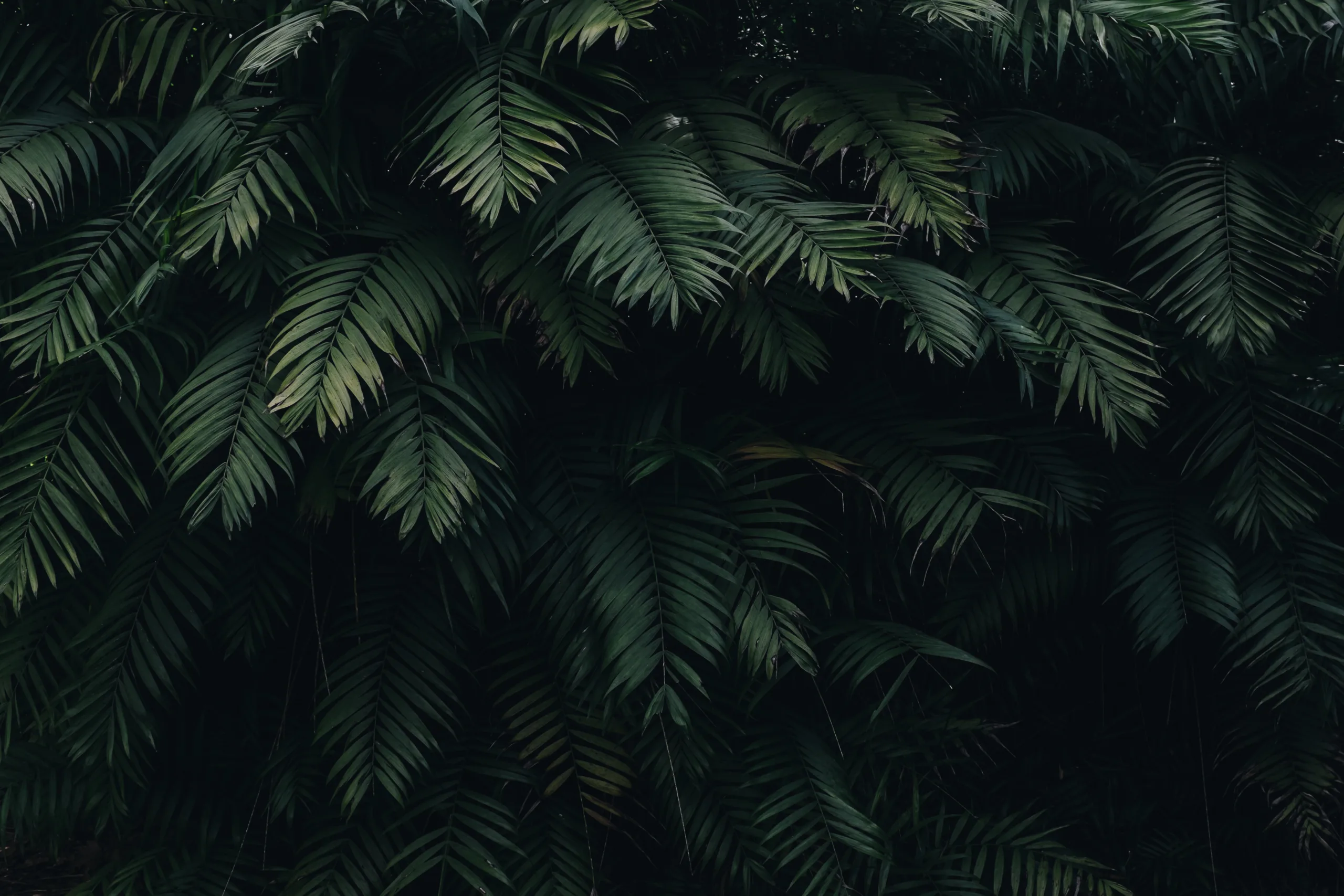Have you ever wanted to create a beautiful, natural landscape in your backyard? Planting trees is a great way to enhance your outdoor space and provide shade, but it’s important to know how far apart you should plant them. Planting too close together can lead to overcrowding and competition for soil nutrients, while planting too far apart can leave your yard looking sparse. Knowing the correct spacing between trees is essential for creating a healthy, attractive landscape. This article will provide you with the guidelines needed to determine the ideal distance between each tree.
The recommended distances for planting trees depend upon the species of tree being planted. Generally, trees should be spaced between 10 and 15 feet apart for most deciduous trees, and between 15 and 25 feet apart for conifers.
How Much Space Is Needed for Optimal Growth?
When planning for optimal growth, it is important to consider the amount of space needed. This can vary depending on the type of plant and other environmental factors, such as sunlight, water and soil. Generally, plants need adequate space to reach their full potential. Too little space can limit the growth of the plant, while too much space can lead to overcrowding or disease.
One way to determine how much space is needed for a particular plant is to measure its root system. Estimate the area that will be covered by its roots when fully grown. The larger the root system, the more space a plant needs. Depending on its size and shape, a container may be needed or an area in the ground may be suitable for planting.
When planting in containers, allow enough room for the roots to spread out and establish themselves properly in order to promote healthy growth. Small pots should not be used as they can limit root growth and overall development of the plant. Containers should also provide adequate drainage so that water does not accumulate at the bottom and cause root rot or other issues.
In addition to providing enough room for root growth, keep in mind that some plants need more than just soil to thrive. For example, some plants require additional support such as trellises or stakes in order to stay upright and reach their full potential. Make sure there is enough space around them so they are not overcrowded by other plants or objects in the area.
Overall, it is important to consider how much space is needed for optimal growth when planning a garden or landscaping project. Measure out enough room for plants’ root systems and provide support where necessary in order to ensure successful growth and development of all plants involved.
Tree Spacing Considerations
When planning a landscape design, tree spacing is an important consideration. Properly spaced trees can provide shade, enhance the beauty of a property, and increase its value. However, trees that are too close together can create problems such as disease, competition for resources, and overcrowding. Therefore, it is important to carefully consider the desired spacing of trees when designing a landscape.
The type of tree should be taken into consideration when determining the proper spacing for trees. Different species of trees have different growth rates and mature sizes. For example, a fast-growing tree such as a maple will require more space than a slower-growing species like an oak or elm. Also, some trees may grow to be very tall while others may remain more compact in height. Therefore, it is important to identify the type of tree that will best fit your landscape plan before deciding on the proper spacing for the trees.
The soil type and climate of the area should also be considered when determining tree spacing. Trees with shallow roots may require more space if planted in sandy soil than those planted in loamy soil which has better water retention capabilities. In addition, certain types of trees may require more or less space depending on the climate they are being planted in. For example, in warmer climates where temperatures are higher and rainfall is greater, larger trees may need more room to spread their roots out than those planted in cooler climates with less rainfall.
Finally, other factors such as existing structures or utilities should be taken into consideration when deciding on optimal tree spacing. Trees should be planted far enough away from existing structures so that their roots do not damage or interfere with them as they grow larger over time. Additionally, any nearby power lines or underground utilities must also be kept in mind when planting trees so that they do not pose any safety hazards as they mature.
In conclusion, there are many factors that must be considered when determining the proper spacing for trees in a landscape design. Taking into account the type of tree being planted, soil conditions and climate of the area, as well as any existing structures or utilities nearby will help ensure that your landscaped area will look beautiful and remain safe for years to come!
The Benefits of Planting Trees Close Together
Planting trees close together can benefit the environment in several ways. A major benefit is that it helps to keep the soil in place and prevent erosion. When trees are planted together, they create a barrier that helps to anchor the soil and prevent water and wind from washing away topsoil. This is especially important in areas prone to flooding or heavy storms. Additionally, planting trees close together helps to create a canopy of foliage that will provide shade and reduce the amount of sunlight reaching the ground. This can help to reduce temperatures in hot climates and make an area more hospitable for wildlife.
Another benefit of planting trees close together is that it helps to increase biodiversity in a particular area by providing habitat for various species to thrive. This includes both plants and animals, as well as insects and other invertebrates. By planting a variety of tree species, you’re providing food sources for different types of creatures, which can help balance out an ecosystem. Additionally, trees planted close together can also provide shelter for birds and other animals during harsh weather conditions or when predators are around.
Finally, planting trees close together also helps to improve air quality by absorbing pollutants from the atmosphere. This can help reduce respiratory illnesses caused by poor air quality, as well as providing cleaner air for everyone living nearby. Additionally, these trees can also help trap carbon dioxide from the atmosphere and reduce greenhouse gas emissions, helping fight climate change over time. Planting trees close together is an easy way to improve the environment while also providing benefits for people living nearby.
Distance between Trees
When deciding how far apart to plant trees, there are several factors to consider. The size of the tree and its root system, the location of the tree, and how close other trees are nearby are all important considerations. Additionally, soil type and moisture can also impact how far apart trees should be planted.
Tree Size and Root System
The size of the tree and its root system are important factors when determining how far apart trees should be planted. Smaller trees will require less distance between them than larger trees. For example, a small ornamental tree such as a Japanese maple may only need a few feet between it and other nearby trees, while larger shade trees such as oaks may need significantly more space to grow properly. Additionally, some trees have larger root systems than others, which can also impact the distance needed between them.
Location of the Tree
The location of the tree is another factor to consider when planting multiple trees in one area. If the area is in full sun with no shade from another tree or structure, then more distance may be needed between each tree than if there is already some shade present in the area. On the other hand, if there is already significant shade present in an area with multiple trees, then less distance may be needed between each one since they will not need as much additional sunlight to grow properly.
Soil Type and Moisture
Soil type and moisture can also affect how far apart different types of trees need to be planted. Trees that prefer moist soil conditions will need more space than those that prefer dryer soil conditions. Additionally, certain types of soil can provide better drainage for certain species of trees than others. This means that if a specific species needs extra drainage or prefers a specific type of soil, then more space should be given between each tree so that they can get enough water without competing with each other for resources.
Overall, deciding how far apart to plant different types of trees depends on several different factors including size, root system, location, soil type and moisture level. By taking these factors into consideration when planting multiple types of trees in one area can help ensure that each one has enough room to grow properly without competing for resources with its neighbors.

The Impact of Planting Trees Too Close Together
Planting trees too close together can have a significant impact on their health and growth. When trees are planted too closely, they compete for resources such as water and sunlight, which can cause them to suffer from diseases or die prematurely. The roots of the trees also become intertwined, which can cause them to become unstable and at risk of toppling over in high winds. Additionally, planting trees too closely together can limit their ability to reach their full potential in terms of size and shape. As a result, the overall health of the tree is compromised and its lifespan is shortened.
In addition to affecting individual trees’ health, planting trees too closely together can also lead to overcrowding in an area. This overcrowding can prevent air from properly circulating and shade from properly forming, which can have a negative effect on the surrounding environment. Furthermore, planting too many trees in an area can decrease the diversity of wildlife that is able to live in the area – an important factor for maintaining biodiversity.
For these reasons, it is important that when planting trees, one takes into consideration the proper spacing for each species. This will ensure that each tree has enough room to grow without competing with other surrounding plants for resources or affecting the overall environment negatively.
Advantages of Spacing Trees Further Apart
Spacing trees further apart has many advantages. One of the most important advantages is that it increases air circulation between the trees and encourages greater photosynthesis. When trees are spaced further apart, they are able to take in more light, which increases their growth and health. Additionally, a greater spacing allows for more root space and better access to water and nutrients. This can help the trees become stronger and more resilient to pests and diseases.
Another benefit of spacing trees further apart is that it allows for better access to sunlight. When trees are close together, they can block out some of the sun’s rays, preventing other plants from receiving enough light to grow properly. By spacing them further apart, more plants can take advantage of the sun’s energy, creating a healthier ecosystem overall.
Spacing trees further apart also reduces competition between them for resources such as water and nutrients. When there is less competition, each tree has a better chance at growing properly and reaching its full potential. Additionally, it can reduce the chances of disease spread as there will be fewer branches touching each other than if they were planted closer together.
Finally, planting trees further apart can also create an aesthetically pleasing landscape design. Spreading out the trees creates a natural looking canopy that is pleasing to the eye while providing plenty of shade when necessary. This type of landscape design also helps reduce soil erosion since there are fewer areas with bare ground exposed to wind or rainwater runoff.
In conclusion, spacing trees further apart has many benefits that should be taken into consideration when planting them in any area. It increases air circulation, encourages photosynthesis, reduces competition between plants for resources such as water and nutrients, improves access to sunlight for other plants in the area, reduces disease spread among plants, and creates an aesthetically pleasing landscape design that helps reduce soil erosion.
Minimum Distance Between Two Trees
The minimum distance between two trees depends on the species of tree and their size. In general, the recommended distances between trees can vary from 10 to 50 feet or more. Planting trees too close together can lead to competition for resources, resulting in poor growth or even death of the plants. Trees should be spaced far enough apart that their roots do not compete for space, water and nutrients.
When planting trees, it is important to consider the mature size of the species before selecting a location. For example, small ornamental trees such as crabapple and dogwood can be planted as close as 10 feet apart, while larger shade and coniferous trees may require upwards of 50 feet for optimal growth conditions. Trees should also be spaced far enough apart so that they will not grow together or create a canopy that shades out other plants in your garden.
When determining the minimum distance between two trees, it is important to take into account factors such as soil type, climate and local conditions. Additionally, you should consider any underground utility lines or structures that could be affected by planting too close together. Consulting with an experienced arborist or landscaper can help you avoid potential problems when planning your garden layout.
At the end of the day, proper spacing between trees is essential for ensuring healthy growth and preventing competition for resources. Taking into account factors such as climate, soil type and mature size of the species will help you determine the best distance between two trees in your particular situation.

Conclusion
When deciding how far apart to plant your trees, the most important factor to consider is the ultimate size of the tree. Planting trees too close together can lead to overcrowding, which can cause competition for resources and eventually lead to poor health or death of one or both trees. When planting trees in a small garden, it is important to ensure that they remain as far apart as possible while still allowing enough room for them to reach their full potential. For larger spaces, trees should be planted further apart so that they have plenty of space to grow and spread their roots without competing with one another.
By planting your trees the correct distance apart for their eventual size, you will be ensuring that both your trees are healthy and happy in their environment. Taking the time to plan out your tree spacing will save you time and energy in the long run and ensure that you have a beautiful and healthy garden for years to come.
Mark Hoffman is a dedicated arborist and tree care specialist with over a decade of experience. His love for trees began when he visited Yosemite National Park as a teenager and was awestruck by the giant sequoias. Mark pursued his passion by studying forestry at Michigan Technological University, where he earned a Bachelor of Science degree.
Since then, he has worked tirelessly in the field of arboriculture, helping to preserve and protect trees in his community. His expertise and dedication have made him a respected leader in the industry and a valuable resource for anyone seeking advice on tree care.
